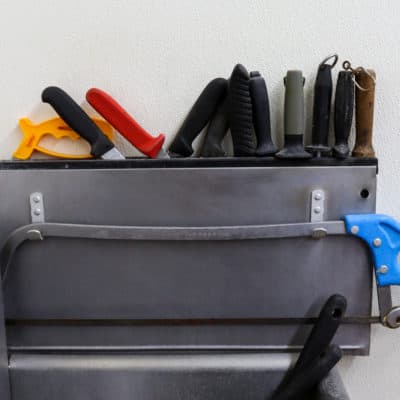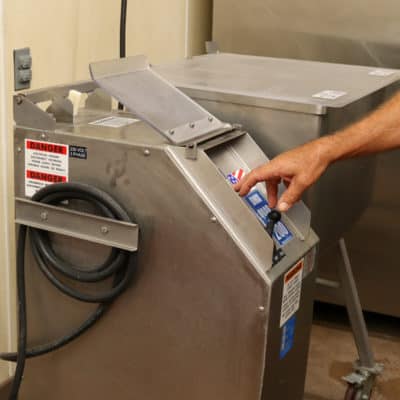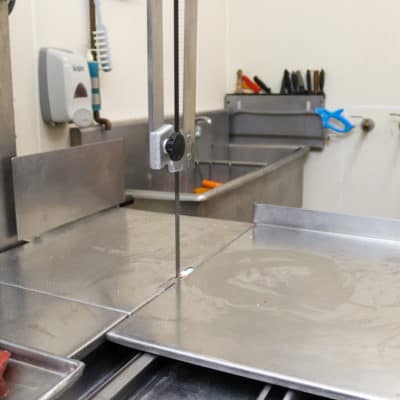


Lacerations and amputations- Meat processing safety talk
Cutting and trimming meat are a primary and necessary parts of meat processing. However, they also put employees at risk for laceration injuries and even amputation.
Tips to consider for safe handling and use:
- Always keep knife blades sharp so that they easily slice and do not slip from the area. This also reduces the exertion needed to make a cut.
- Knives should be in good condition with no chips or breaks.
- Handles should be in good condition and secured properly to the blade.
- Wear cut resistant gloves, gauntlets and aprons to prevent accidental cuts.
- Knives should be stored properly in a knife storage block or magnetic strip not thrown in a drawer or placed in a cup that could tip over.
- Be careful when placing knives in sink for cleaning with handles up and not concealed by soap or other items
- When using cutting equipment, ensure all appropriate guarding is in place and secured before beginning.
- If there is a jam in equipment, turn the equipment off and lock out the power. Ensure blades have come to a complete stop before attempting to service.
- Do not attempt to make a cut by knife or machine if there is not enough to keep a good hold on.
